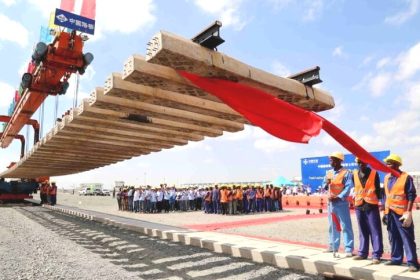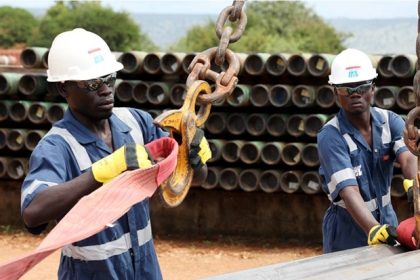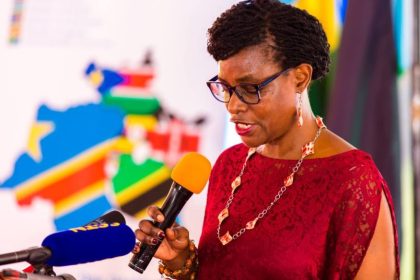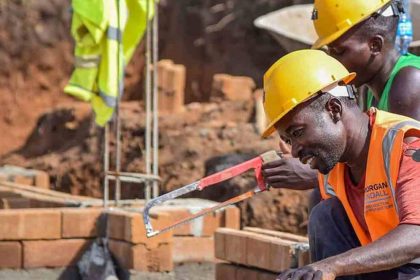Regional container traffic to bounce back after Kenya polls
December 22—Maersk Line, the worldwide logistics company, said container trade growth in East Africa over the third quarter of 2017, has been limited by the political uncertainty that surrounded the recent elections in Kenya, which spilled over into other key countries served by the Northern Corridor, such as Uganda.
However, Mads Skov-Hansen, the Managing Director at Maersk Line Eastern Africa said overall, the region maintained its upward growth although this had slowed in recent months. Year-on-year growth stood at 3%.
“It’s always difficult to analyse a specific period during an election year. We typically see significant trends play out which may mean that the results captured are not actually a true indicator of real growth experienced,” Skov-Hansen said in the a latest review of the business.
He said, “These trends are particularly relevant to note with regards to imports. “During an election year, imports tend to see a boost just before the election day, as people tend to stock up on basic commodities. There is then usually a drop in imports immediately after, as people hold back on spending, opting rather to hold on to the liquidity in the face of political unrest and economic uncertainty.”
Despite that fact, the East African import market has strengthened during the third quarter, particularly in the Central Corridor (passing through Tanzania), which was up 17% from the previous quarter, resulting in 3% year-on-year growth. The Northern Corridor, on the other hand, was up 6% from the previous quarter, and exhibited 6% year-on-year growth.
The main drivers to this increased import market were consolidated cargo, used clothing and foodstuff in the Central Corridor, while the Northern Corridor saw an increase in import of textiles and synthetic resin – sourced mostly from Saudi Arabia and used as raw material components in different industries, from the manufacture of plastics to adhesives.
Turning to exports, he said whilst the market continues to be largely agriculture-based – dominated by tea, coffee and avocados in the Northern Corridor and animal fodder, seeds and tobacco in the Central Corridor – during the third quarter of 2017, commodities and minerals have also played a prominent role in export growth.
He cited copper – used in the construction of electronics in China, India, the United Arab Emirates and South Korea – and soda ash – exported mainly to India and Thailand for the manufacture of glass – contributing significantly to exports in the Central Corridor and Northern Corridor respectively.
“While the Northern Corridor’s exports were still down by 5% year-to-date as a result of the drought earlier on in the year, which negatively impacted tea exports from Kenya, the Central Corridor bounced back to break even in terms of year-to-date export movements. Kenya and Uganda are actually the key export locations, seeing 2% year-on-year export growth, when compared to quarter three of last year, while the Central Corridor experienced 3% year-on-year export growth,” Skov-Hansen said.
He said, “For the Northern Corridor, the political situation limited the growth of markets this quarter, but subject to stability, we at Maersk have a positive outlook for the Kenyan economy in terms of continued growth. Similarly, the outlook for the Central Corridor is positive, driven by positive sentiment around Rwanda, Uganda and Tanzania.”
He said in Kenya’s case, for avocado exporters, the inception of controlled atmosphere containers has created a fundamental change. Before the new technologies were available, the Middle East had been as far as the exporters could reach in containers. Now, Europe, where the fruit sells for roughly triple the price, is within reach.
Towards the end of 2016 and the beginning of 2017 Kenya experienced a prolonged dry spell which negatively affected the avocado trees which flower within this period. This resulted in a depressed harvest compared to the 2015/2016 season.
Skov-Hansen said, “Looking forward, the outlook for 2017/2018 is looking good due to the current rains. Kenya produces an estimated 115,000 metric tons of avocado annually, 70% of which is grown by small-scale farmers. Some years back, most of the avocados were sold in local markets, but now about three quarters of the avocado fruit grown is exported.”

 AfDB puts up nearly $700m for Burundi-Tanzania SGR link
AfDB puts up nearly $700m for Burundi-Tanzania SGR link
 Bank of Uganda keeps base rate at 9.5% to support surge in GDP growth
Bank of Uganda keeps base rate at 9.5% to support surge in GDP growth
 Africans must resist being bulldozed in energy transition timetable debate
Africans must resist being bulldozed in energy transition timetable debate
 Standard Bank Group appoints new Chief Executive for Uganda Holdings
Standard Bank Group appoints new Chief Executive for Uganda Holdings
 TradeMark Africa introduces new App to limit EAC trade barriers
TradeMark Africa introduces new App to limit EAC trade barriers
 Employer hiring up during November as Stanbic PMI rises to 53.4
Employer hiring up during November as Stanbic PMI rises to 53.4
